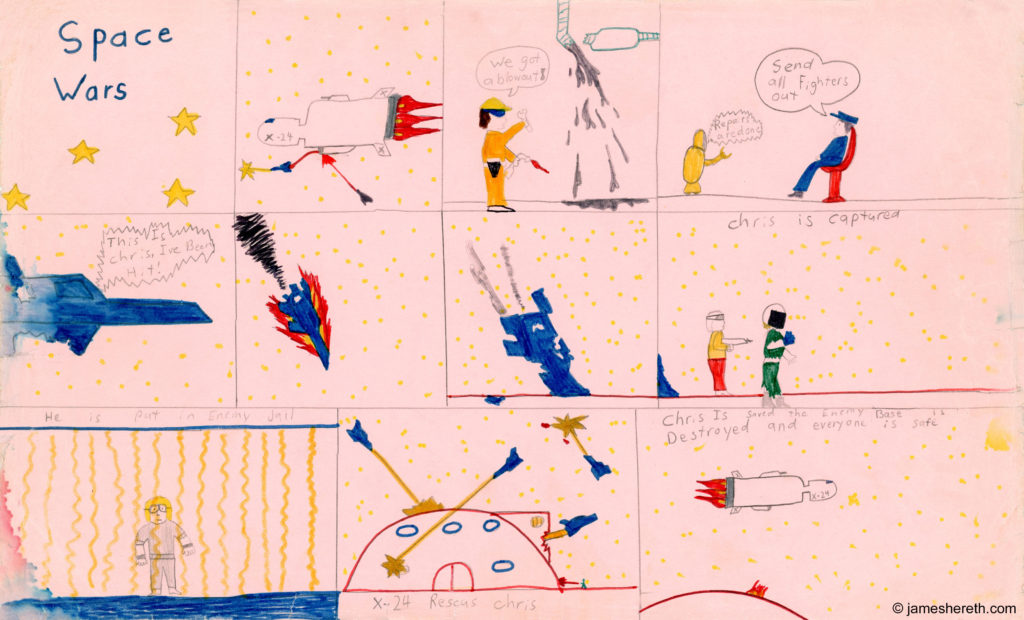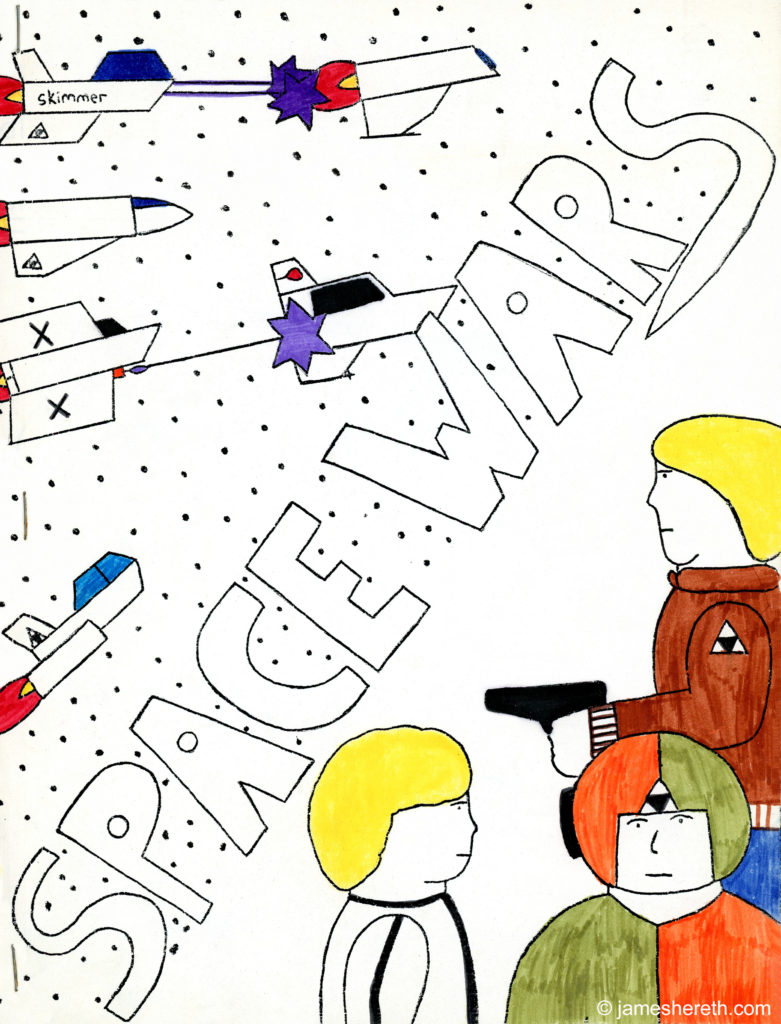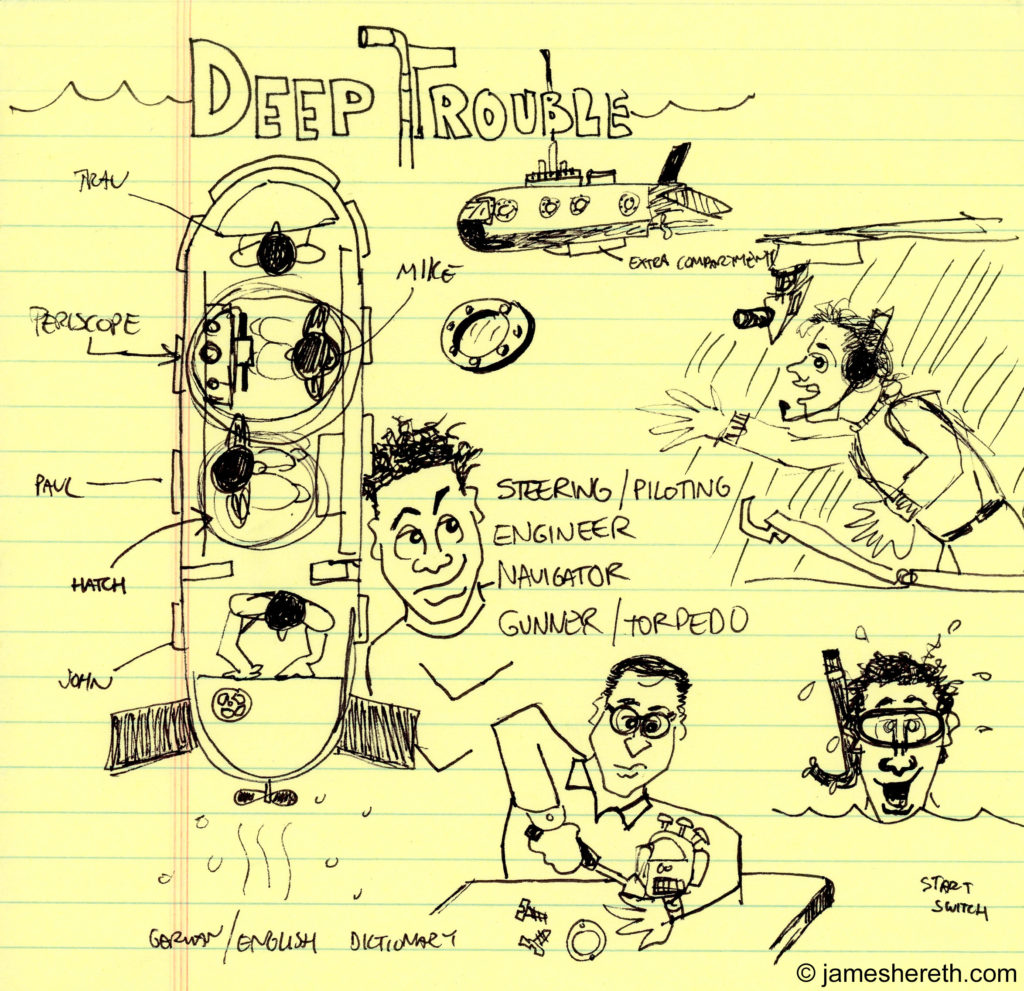Before movie and television writing became my focus, my creative outlet of choice was drawing. Like most kids, I guess. It’s kind of mandatory coursework in the early schooling phases, alongside Introduction to Napping and Paste Eating 101.
The semi-serious comic strip instructional manual.
For me, though, it became sort of a “thing.” I liked it, I was pretty good at it, and it was something I identified myself by. As the years went on, I gradually advanced beyond finger-painting and macaroni collage, though I still never thought of myself as a fine artist – the italicized arteest. Rather, I was a “cartoonist.”
And I didn’t just love drawing them, I loved reading them too.
On Sunday mornings, I excitedly looked forward to diving into the comics section of the New York Daily News (even Dondi and Brenda Starr, Reporter). I thought to myself, I could do that. I want to do that. Maybe that’s what I was gonna do when I grew up.
This idea was further reinforced when I got the Mort Walker autobiography, “Backstage at the Strips,” along with his how-to book, “The Lexicon of Comicana.”
Walker was the creator of Beetle Bailey and Boner’s Ark, as well as Hi and Louis with Dik Brown. Backstage at the Strips told the story of his journey to becoming a successful comic strip artist, and working in a barn behind his house alongside several colleagues.
Man, that sounded so cool.
All I had to do was dream up a comic of my own, and maybe I could work in that barn too.

Somewhere in there is a decent joke just trying to come out. Just needs ten or twelve more passes to realize its full potential.
Not surprisingly, it wasn’t as easy as I thought it might be, and I never generated much finished material. I created a lot of character line-ups and concepts, sure, but few actual strips.
Where my muse ended up being found, was in the somewhat longer form of comic books.
At the time, my parents were regulars at any garage sale or flea market within a hundred and fifty mile radius. When my sisters and I would tag along, we’d inevitably pick up assorted secondhand superhero books, along with numerous Richie Rich issues and Archie digests.
I even got my first ever comic book subscription, in the form of the Star Wars continuing adventures, which always arrived via mail wrapped in a brown paper sleeve like a miniature Playboy magazine.
After I’d gone through those, I’d periodically sift through the stacks at the local library for Buck Rogers and Flash Gordon compilations.
All of this rich inspirational material eventually led to my magnum opus, Space Wars.

Space Wars “classic.” In its original legal-sized format.
Surely you’ve heard of it. My wholly unique and not-at-all-derivative sci-fi masterpiece combining all the best features of Star Wars, Battlestar Galactica, Buck Rogers in the 25th Century, and maybe just a soupçon of Jason of Star Command.
I drew these ongoing adventures on various shades of colored legal paper (which were ubiquitous in our house, thanks to my parents’ printing side business). Or at least, I did until I hit the big time.
In the fifth or sixth grade I was lucky enough to be invited to participate in my elementary school’s “Gifted and Talented” program (obviously, this was before I stopped doing homework in later high school with the accompanying decline in academic status).

The Space Wars reboot. My public comic book debut as both writer and artist. Oddly, now out of print.
I don’t remember if this was my idea or theirs, but the program offered to “publish” a comic of mine – written and drawn specifically for the occasion – and distribute it to my fellow students.
Once I completed my twenty-page Space Wars masterpiece, it was Xeroxed on 8½ x 11 paper, stapled together, and the copies handed out to my class.
If that wasn’t awesome enough already, one kid even paid me five bucks to color his copy with magic markers.
I was a professional.
Despite these epic successes, however, I sort of drifted away from the art world after high school and into the scripting one.
Still, the skill remained useful. While writing screenplays with elaborate action scenes, I’d periodically draw out the intended choreography to see if it made sense (or maybe even led to something better). Other times, I’d diagram a complicated location or just doodle my characters in scripted situations for inspiration.
Writing animation professionally, I’ve even supplemented a script delivery with a drawing or diagram for clarification (do not do this in specs, though. Very frowned upon).

A sneak peek behind the scenes of the yet-to-be-purchased spec, “Deep Trouble.”
Recently, however, I found myself intrigued by comics all over again. Drawn back by the escalating trend of comic source material across every platform of the entertainment industry, and the rise of the geek world to mainstream prominence.
So I dipped my toe back in, and eventually the entire foot. Sought out both iconic and trending books, like The Dark Knight Returns, The Killing Joke, Saga, and The Walking Dead. Checked out work by friends and associates, including Adam Beechen’s Hench, and Andi Ewington’s 45 (Forty-five).
I wanted to be a part of this world. I wanted to go back to my roots and tell a story in the form of a graphic novel. Bring my imagination to life in sequential art.
To make that dream come true, Rhonda Smiley and I have adapted Blowback, a script of ours that seems like a natural for the medium, and we’re going to publish it ourselves.
I’m not going to draw this one, of course. High School amateur is not the style sense we’re shooting for. This time I’ll stick to words and leave the artwork to a veteran pro.
As of right now, Rhonda and I have agreed in principle with an awesome artist and if all goes well in the contract stage, they should be putting pencil to paper (both metaphorically and literally) within a month.
If you’re interested, you’re cordially invited to join me on this journey. Read along as I share the ups, downs, blood, sweat, and tears (hopefully more “ups” than “tears”).
Brace yourself, though, I’ve got a feeling it’s gonna be a pretty bumpy ride between here and Comic-Con. But we’ll press on, regardless.
Excelsior!
![[TEXTSMITH] BLOG](https://blog.jameshereth.com/wp-content/uploads/2016/07/cropped-cropped-BulbsPlus.jpg)
Pingback: [THREE CENTS] What Now? | [TEXTSMITH] BLOG[TEXTSMITH] BLOG
Pingback: [ETCETERA] Please Stand By | [TEXTSMITH] BLOG[TEXTSMITH] BLOG
Pingback: [SPOTLIGHT] Blowback, a Debut Graphic Novel | [TEXTSMITH] BLOG[TEXTSMITH] BLOG